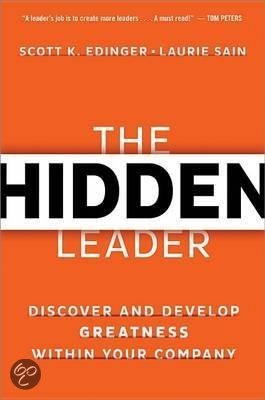Scott K. Edinger and Laurie Sain. The Hidden Leader: Discover and Develop Greatness within Your Company, Foreword by James M. Kouzes and Barry Z. Posner. New York: Amacom, 2015.
 I sometimes find that I have snobbish tendencies. One way they come out is in relation to books published by AMACOM. Most of what I have seen relevant to understanding leadership and addressing its development has not been very sophisticated. But then, I suppose they are performing a service by encouraging folks like Edinger and Sain to present their ideas so they can by used by people in executive and management roles, primarily in business.
I sometimes find that I have snobbish tendencies. One way they come out is in relation to books published by AMACOM. Most of what I have seen relevant to understanding leadership and addressing its development has not been very sophisticated. But then, I suppose they are performing a service by encouraging folks like Edinger and Sain to present their ideas so they can by used by people in executive and management roles, primarily in business.
So what are the key themes these authors are encouraging those in leader roles to pay attention to? To begin with, they are promoting the idea, one I share, that those stepping into leader roles in organizations are not just found at executive levels, but throughout an organization. These are the “unsung leaders” found among the ranks of managers and supervisors. They face difficult challenges with creativity and meaningfully in relation to increasing productivity, engaging customers and so on.
And then they identify these hidden leaders based on traits: integrity, courage, ethical code and consistency. Fascinating. When are we going to learn that such traits, while to be respected in the abstract, rarely predict outcomes, including the capacity to attract stakeholders to follow, to participate. When are we going to learn that context matters – A lot! When are we going to recognize that individual success in any role is in part a product of the processes used to recruit, hire and reward personnel, communicate, solve problems and make decisions, allocate resources and the like?
A value of their approach is to democratize the notion of leadership. I agree we need to recognize and reward those at all levels of our organizations who can attract creative and purposeful energy to achieving valued results. Perhaps if we did more of this it would also help us address income disparity and put an end to CEO compensation more than 300 times the lowest paid employees. The authors emphasize the importance of leading through relationships. One wonders why they did not attend to leading and following through relationships. But even here we must attend to the fact that relationships exist in complex networks, constellations that are moving and shifting constantly. These relationships are influenced by many variables, some outside the purview of the workplace.
The authors also emphasize the importance of perspective, but primarily in relation to goals or outcomes. Little attention is paid to how position, cognitive and socio-emotional development impact perspective or worldview. Perspective seems to be more important for boundary management, for clarity of boundaries supports creativity, so say Edinger and Sain. Does this mean if you behave (respect boundaries) you will be creative? Interesting proposition.
The books includes tools for identifying and supporting hidden leaders, e.g. assessing the organization’s culture. Don’t get my snobbish response wrong. I am sure that people will find value in this work, particularly if they are not looking for quick fixes.
